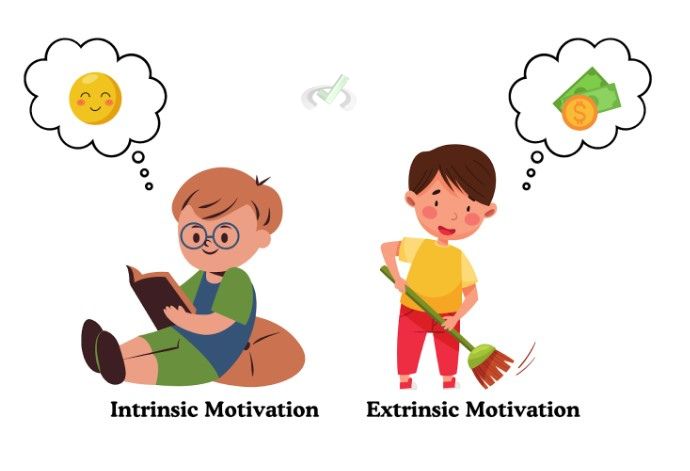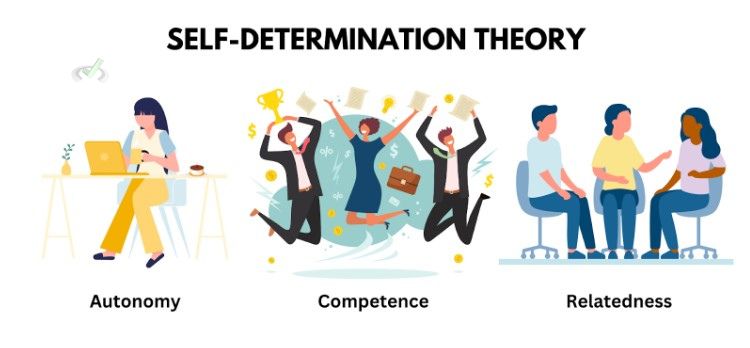Imagine you’re standing at the starting line of a race. Your heart is pounding, your muscles are tense, and a surge of energy rushes through you.
This intense feeling is your body’s natural response to motivation. Motivation is a complex concept, but understanding it can help us achieve our goals and improve various aspects of life. Let's dive into the details of motivation, its features, and the theories that explain how it works.
I. What is Motivation?
Motivation is what drives us to take action. It can be as simple as eating when you're hungry or as complex as pursuing a long-term career goal.
Just like a car needs fuel to run, humans need motivation to achieve their goals. There are two main types of motivation:
- Intrinsic Motivation: This comes from within. For example, you might read a book because you enjoy it.
- Extrinsic Motivation: This comes from external rewards. For example, you might do chores to earn an allowance.

II. Features of Motivation
Motivation has several key features:
A. Direction
This refers to what you are motivated to do. For example, a student may be motivated to study for good grades. Direction helps you focus on specific goals.
B. Intensity
This is how hard you try. If runners are very motivated, they might train harder than those who are less motivated. Intensity shows the level of effort you put into reaching your goal.
C. Persistence
This is how long you keep trying. A person might stay motivated to reach a goal despite facing obstacles. Persistence means sticking with your goal over time.
III. Theories of Motivation
1. Maslow's Hierarchy of Needs
Maslow's theory suggests that people are motivated by a hierarchy of needs. These needs are:
- Physiological Needs: Basic needs like food, water, and sleep.
- Safety Needs: Feeling safe and secure, like having a stable job and a home.
- Love and Belonging: Having relationships and being part of a group, like friends and family.
- Esteem: Feeling good about yourself and being respected by others.
- Self-Actualization: Achieving your full potential, like pursuing personal goals and growth.

Maslow believed that one must satisfy lower-level needs before focusing on higher-level ones. For example, one won't be as focused on making friends if one is hungry.
2. Herzberg's Two-Factor Theory
Herzberg's theory divides motivation into two factors: hygiene factors and motivators.
- Hygiene Factors: These are basic needs like salary, job security, and working conditions. If these aren't met, you're unhappy. But meeting them doesn't make you extra motivated. For example, having a clean and safe work environment is a hygiene factor.
- Motivators: These are things like recognition, responsibility, and personal growth. These make you more motivated. For example, recognizing your hard work can motivate you to keep performing well.

`3. Self-Determination Theory (SDT)
SDT focuses on the importance of three basic needs for motivation:
- Autonomy: Feeling in control of your actions. For example, choosing how to do your work can motivate you.
- Competence: Feeling capable and skilled. For example, learning new skills can make you feel more confident.
- Relatedness: Feeling connected to others. For example, working in a supportive team can increase your motivation.
When these needs are met, people feel more motivated and fulfilled.

4. Expectancy Theory
Expectancy theory states that motivation depends on three things:
- Expectancy: Belief that effort will lead to good performance. For example, if you believe studying hard will lead to good grades, you will likely study.
- Instrumentality: Belief that good performance will be rewarded. For example, if you think good grades will get you into a good college, you're more motivated to get those grades.
- Valence: How much you value the reward. For example, if getting into a good college is important, you'll be more motivated to achieve good grades.

IV. Bridge/Overlap
Motivation is not just about one theory or one type of need. Often, different aspects of these theories can work together to explain why we do what we do. Here are a few examples of how motivation can be applied in various areas:
A. Learning and Memory
Understanding motivation can help improve learning and memory. When students are motivated, they are more likely to pay attention, practice, and retain information. Teachers can enhance motivation by making learning relevant and rewarding.
B. Behavior and Behavior Change
Motivation plays a crucial role in behavior and behavior change. For example, someone wanting to quit smoking must be motivated to change their behavior. Techniques like setting goals, providing incentives, and offering support can help increase motivation and lead to successful behavior change.
C. Emotion and Stress
Motivation is closely linked to emotions and stress. Positive emotions can enhance motivation.
Meanwhile, negative emotions like fear or stress can hinder or increase motivation, depending on the situation. Managing stress and fostering positive emotions can improve motivation.
D. Social Psychology
In social psychology, motivation affects how we interact with others. For example, people are more likely to help others when motivated by empathy or social rewards. Understanding what motivates social behavior can help improve cooperation and relationships.
V. Wrap Up/Key Terms
Let’s take this time to wrap up & concisely summarize what we covered above in the article!
Key Terms
Motivation: The drive to take action and achieve goals.
Intrinsic Motivation: Motivation from within, like doing something because you enjoy it.
Extrinsic Motivation: Motivation comes from external rewards, like doing something for money or praise.
Maslow's Hierarchy of Needs: A theory that suggests people are motivated by a series of hierarchical needs, from basic physiological needs to self-actualization.
Herzberg's Two-Factor Theory: A theory that divides motivation into hygiene factors (basic needs) and motivators (factors that increase motivation).
Self-Determination Theory (SDT): A theory that emphasizes the importance of autonomy, competence, and relatedness for motivation.
Expectancy Theory: A theory that states motivation depends on expectancy (effort leads to performance), instrumentality (performance leads to reward), and valence (value of the reward).
VI. Practice
Sample Practice Question 1
Which of the following is NOT a basic need in Maslow's Hierarchy of Needs?
A. Physiological NeedsB. Safety Needs
C. Love and Belonging
D. Autonomy
Ans. D
Autonomy is a basic need in Self-Determination Theory, not Maslow's Hierarchy of Needs.
Sample Practice Question 2
According to Herzberg's Two-Factor Theory, which of the following is a hygiene factor?
A. Recognition
B. Salary
C. Responsibility
D. Personal Growth
Ans. B
Hygiene factors are basic needs that prevent dissatisfaction. Salary is a basic need, whereas recognition and personal growth are motivators.







 To help you achieve your goal MCAT score, we take turns hosting these
To help you achieve your goal MCAT score, we take turns hosting these 





















 reviews on TrustPilot
reviews on TrustPilot